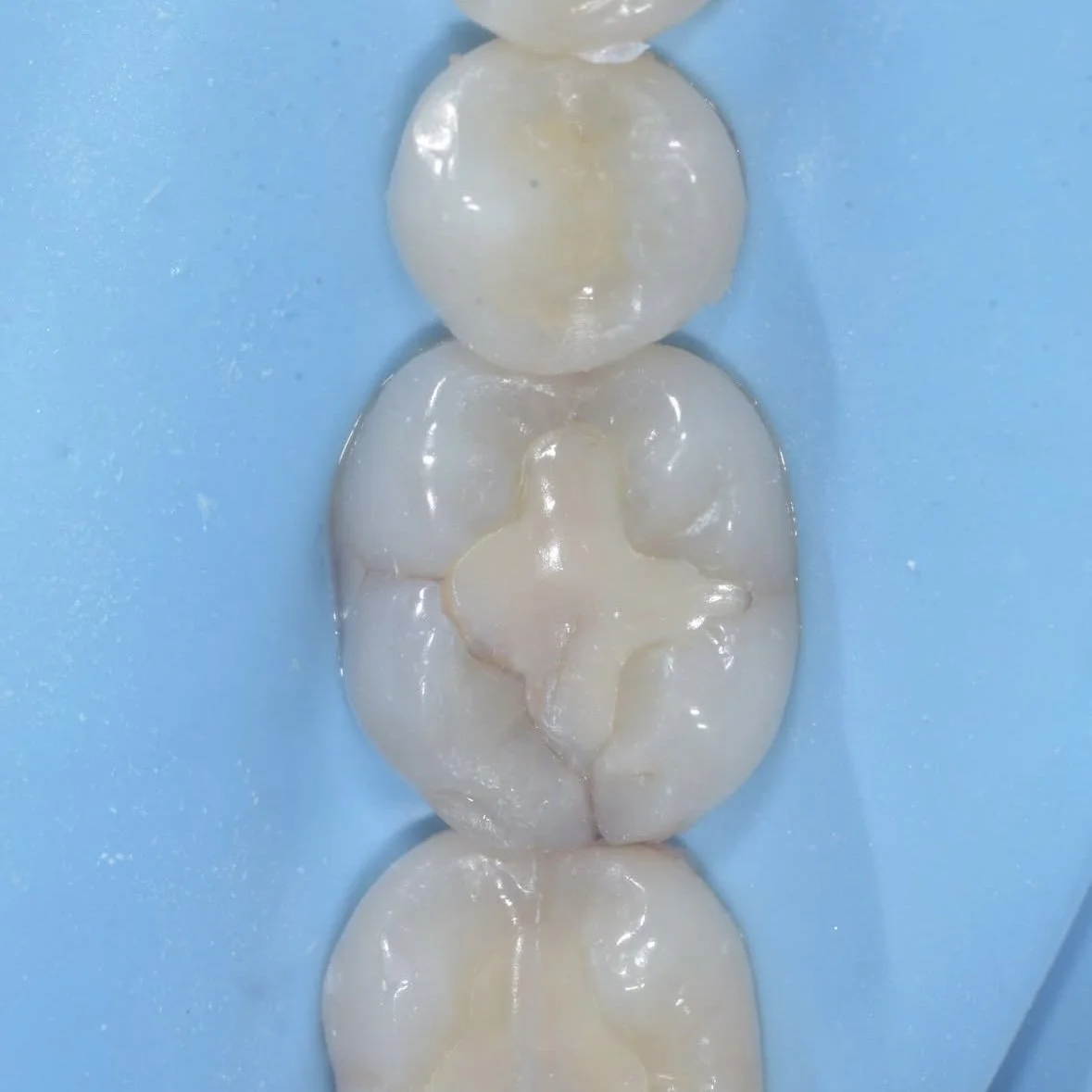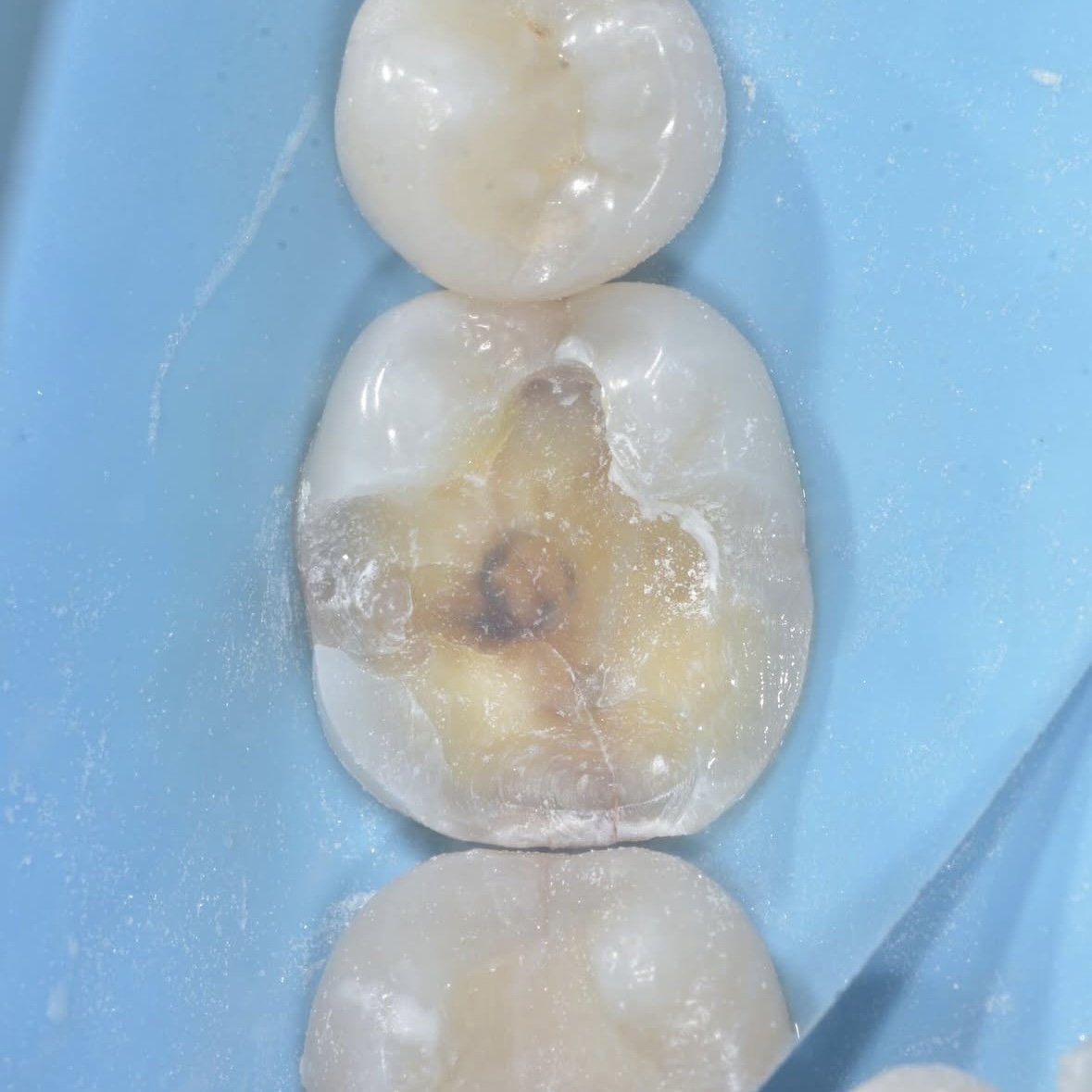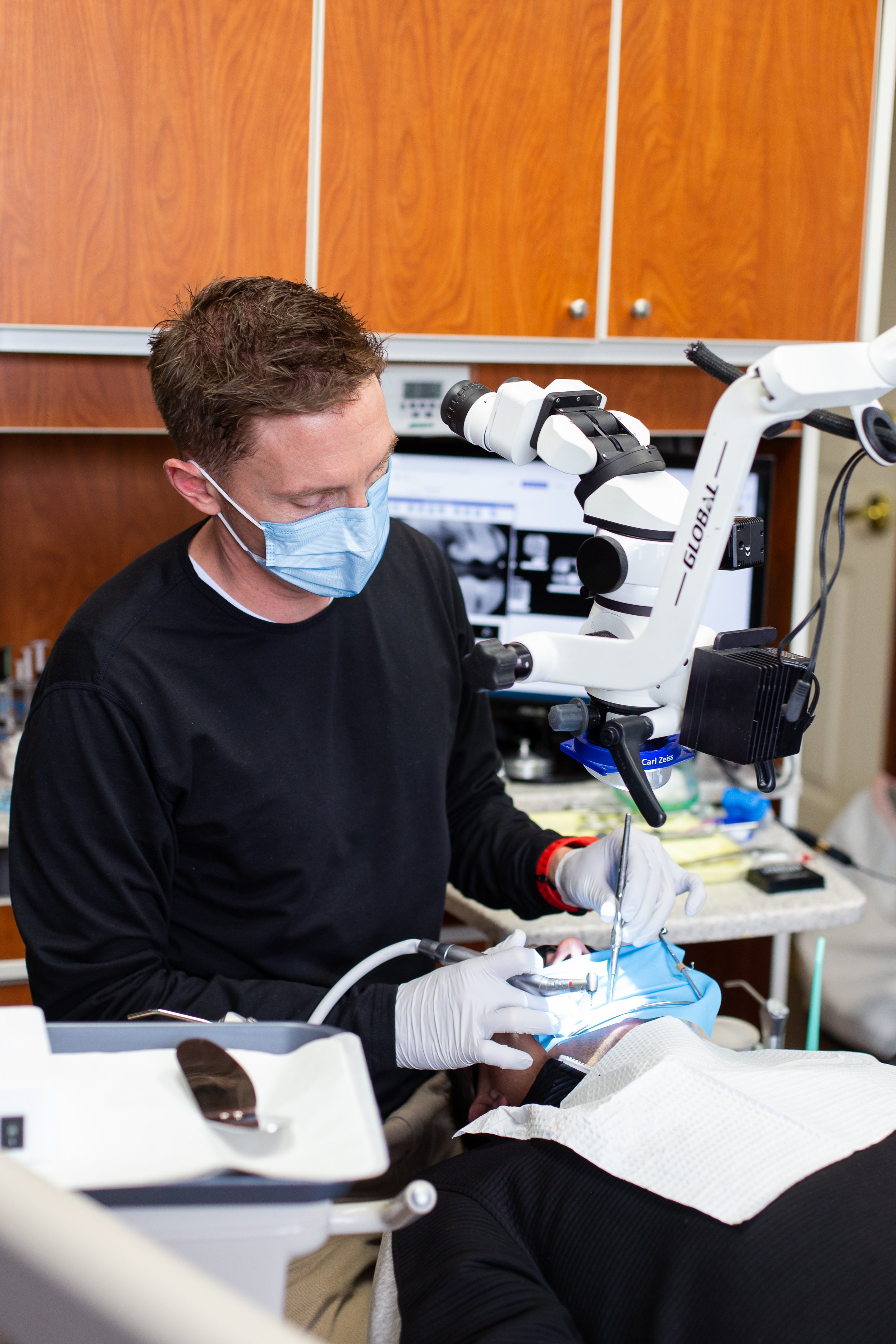Cracked & Damaged Teeth
What causes cracks in teeth?
Teeth are made up of two materials, a hard outer shell called enamel and a durable inner material called dentin. Cracks into enamel are a natural stress relief for the tooth to withstand the forces of chewing. If cracks extend into dentin, they should be treated to stop the crack from growing.
Cracks in teeth are most commonly associating with extreme force, like injury that would break a tooth or biting a very hard food. While this can crack teeth, cracks can also form over time from regular chewing, most commonly in teeth with fillings or crowns but also in untreated teeth.
A large composite restoration failed to support the surrounding tooth structure, causing a crack to form under a cusp (visible as a white line). The crack is removed and the tooth is restored biomimetically. Case by Dr. Davey Alleman, DMD.
Symptoms associated with cracked or damaged teeth
Large cracks or fractures from trauma such as injury or biting on something hard will be visible or noticeable with your tongue. Even if the damage is small and you do not feel pain after, we still recommend contacting your dentist to have the tooth examined for further damage.
Small cracks into dentin may not be visible or apparent in other ways but can result in symptoms. Cracks will cause sensitivity as they propagate through the tooth, with symptoms stopping as the tooth remineralized to protect the pulp. For patients, this means any symptoms of pain or sensitivity should be shared with your dentist during your twice-annual exam. At Alleman Dental, we use a 1-2-3-4 Risk Assessment to diagnose your tooth’s risk of fracture, allowing us to treat cracks before they pose a risk to your tooth’s long-term health.
Poorly bonded composite resulted in the cusp fracturing off of the tooth. Unfortunately, this caused the tooth’s nerve (the pulp) to die and this tooth needed root canal therapy. Afterwards, the tooth was restored with biomimetic restorative dentistry. Case by Dr. Davey Alleman, DMD.
Treatment options for cracks in teeth
Cracks in teeth are treated the same way as decay. The damaged area of the tooth is removed, leaving sound, healthy tooth structure or the base of your restoration. Biomimetic bonding protocols restore your tooth so it is full connected, making it resilient to cracks in the future.
Cracks around the old composite restoration are visible as dark lines, but most of the damage is beneath the surface. Once the old composite is removed, a large crack heading toward the tooth’s nerve is visible. This must be removed to prevent the tooth from cracking further, which could result in a root canal or extraction. Case by Dr. Davey Alleman, DMD.
Become an Alleman Dental Patient
Schedule your appointment online
Contact our patient care coordinator, Sheila, to learn more about our personalized dental care
Request an online treatment consultation with Dr. Alleman
Information for out of town patients
Learn more about membership plans, billing and insurance









